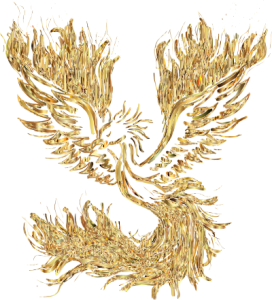How many of us have experienced déjà vu, or known something before it happens? How many of us have sensed the presence of a deceased loved one, communicated via telepathy with another person on an animal, or had a prophetic dream? How many times have you heard a voice in your head telling you not to take a particular turn in the road?
If you have, you have experienced your own superpowers. These are the unknown capabilities that enable us to break through the barriers of the material world to connect with the world of the mysterious, miraculous – the supernatural. We all have them although we generally dismiss the validity of such experiences because our society historically does not recognize that they are “real.” Contemporary Western culture’s denunciation of the miraculous we all possess is based in the organized, institutionalized negation of anything imperceptible through sensory cognition.
Pagan societies in Europe were like other traditional and indigenous cultures that integrated the supernatural world and its mysteries into daily life. As the hegemony of the Roman Catholic Church was established in the Middle Ages the old beliefs were driven underground or completely destroyed (Thomas, 1971). The Reformation, Enlightenment, Industrial Revolution, and the advent of Science and Technology successively and collectively reduced our valid conscious awareness to the physical that could be observed, measured, predicted, and replicated (DeWitt, 2003). Psychology developed along a path that not only negated supernormal experiences and denied the existence of the supernatural but went so far as to pathologize any admitted interaction with it (APA, 2013; VandenBos, 2015).
In recent years there has been an upsurge in efforts within multiple disciplines to examine and prove the existence of superconsciousness, its remarkable non-physical phenomena, interdimensional, and the existence of the superpowers that we as humans possess. The field of parapsychology began to evolve to research dreams, mediumship, near-death experiences, and so-called psi phenomena e.g. precognition, psychokinesis, and ESP in the middle of the last century. Some brave anthropologists began to research the world of folklore with its tales of fairies, time travelers, and magicians.
Historians, religious scholars, sociologists, and even physicists have now joined the party using their tools to explore and prove the existence of hauntings, UFOs, miracles, and other aspects of interdimensional. Exploration of what lies beyond the physical realm has become a collective, multidisciplinary effort. These revolutionary findings are now being published in books and even academic journals, thus becoming part of the established literature for use by current and future scholars.
Do you possess superpowers? Religious scholar and philosopher Jeffrey Kripal answer this question in his most recent book, The Superhumanities: Historical Precedents, Moral Objections, New Realities (1922) with an emphatic Yes!!! In his uniquely accessible and engaging manner, Kripal provides a historical overview of our status as superhumans, our superpowers, and an analysis of how these abilities continue to be core beliefs in current indigenous and traditional cultures. He teaches a course in the Superhumanities at Rice University in which he expounds on the theory that we are all the “mutants and mystics” portrayed in “legitimate” science fiction, fantasy, and comics – if we only knew how to access and use our superpowers.
In The Superhumanities, Kripal describes how each of us is very much like Super Man in that we have superpowers that we have to keep hidden from the disbelieving world and disguise ourselves as the mundane Clark Kent until an emergency calls us to transform into our Super Selves. He observes that tales of humans with superpowers are evident in the myths of the ancient world as well as in indigenous cultures, and asks” Why should contemporary humans believe that they are any different from the people portrayed in the myths?”
Why indeed?

